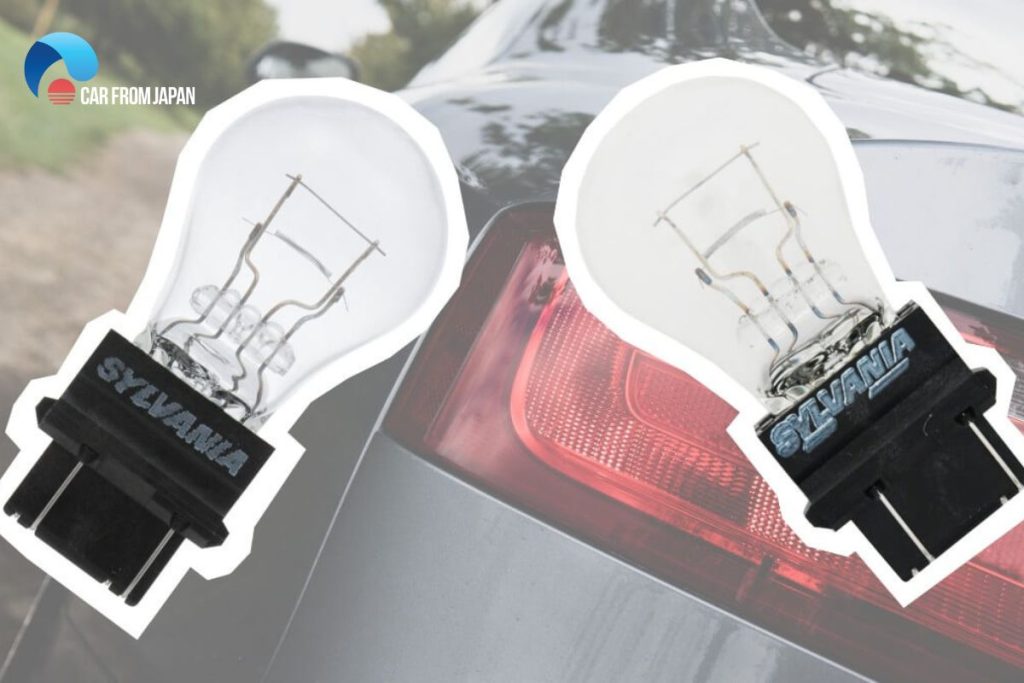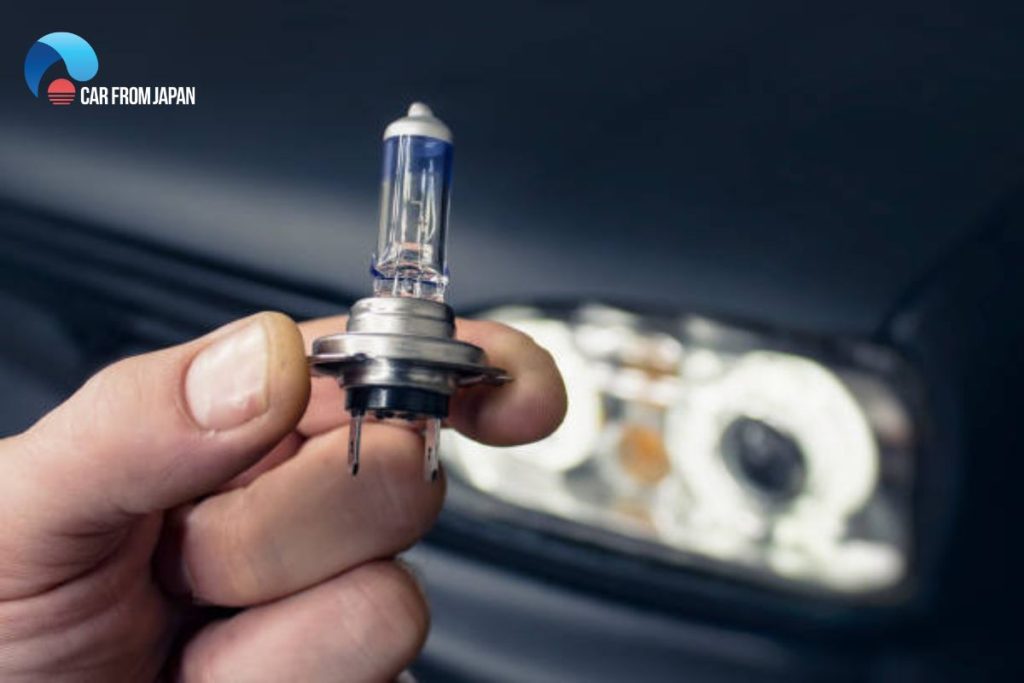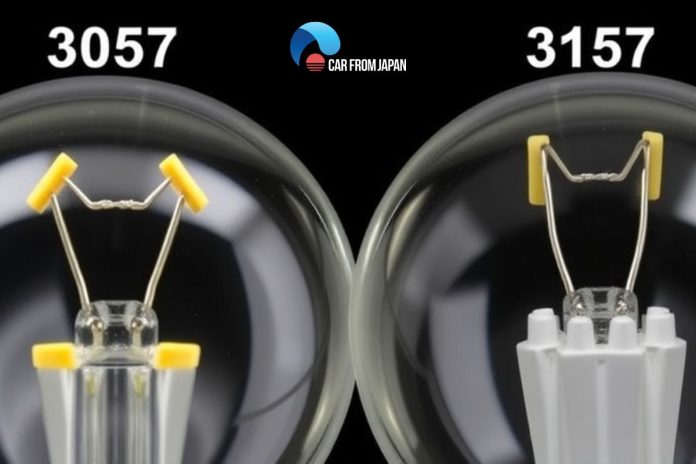To help you purchase the ideal bulb for your beloved car, let us draw comparisons between 3057 Vs 3157 bulb.
Most of the drivers simply get in and start the car’s lighting system without realizing the fact that these lights add to their security.
Responsible for protection and communication, these lights consist of a bulb, which is the backbone of the entire lighting system. With 3057 and 3157 bulbs in great demand, it’s getting difficult to select the best one out of the two.
Contents
- 3057 Vs 3157 Bulb: Which Car Lamp Should We Go After?
- FAQs on 3057 vs 3157 Bulb
- What is the main difference between the 3057 vs 3157 bulb?
- Are both bulbs suitable for brake lights and turn signals?
- Which bulb is more energy-efficient?
- Can I upgrade from a 3057 bulb to a 3157 bulb for better brightness?
- Which bulb is more commonly used in vehicles?
- Can I replace a 3057 bulb with an LED version or vice versa?
- Final Words
3057 Vs 3157 Bulb: Which Car Lamp Should We Go After?
The vehicle’s tail lights usually consist of long-life bulbs. These may differ in size, color, and brightness from one vehicle to another.
With several types of bulbs available in the market, 3057 and 3157 are the ones that are in high demand. So, with no more fuss, let’s straightaway jump to the industry knowledge of these bulbs.
Purpose and Applications
The 3057 bulb is a dual-filament bulb commonly used for automotive brake lights, turn signals, and tail lights. It has two filaments.
One for the regular illumination (running lights or parking lights) and another for higher brightness when the brake pedal is pressed or the turn signal is activated.
Similar to the 3057, the 3157 bulb is also a dual-filament bulb primarily used for brake lights, turn signals, and tail lights in many vehicles.
It provides the same functions as the 3057, with separate filaments for regular illumination and increased brightness during braking or turning.
Brightness and Output: 3057 vs 3157
The 3057 bulb typically has a lower lumen output compared to the 3157 bulb. It provides sufficient illumination for normal driving and signaling purposes, but it may not be as bright as the 3157.
In contrast, the 3157 bulb generally has a higher lumen output, making it brighter than the 3057 bulb. This extra brightness can enhance visibility and grab the attention of drivers behind you when you apply the brakes or activate the turn signal.

Compatibility
Both the 3057 and 3157 bulbs have the same bulb base (W2.5x16q), making them physically interchangeable in most cases.
They can fit into the same socket, so it’s essential to check your vehicle’s owner’s manual or consult with a professional to ensure compatibility with your car’s specific make and model.
Size: 3057 vs 3157
Here, the battle between the 3057 Vs 3157 bulb is won by the 3057. However, the average rated life battle is won by the 3157, as it is more durable.
Note: The bulb life also depends on the way the driver uses them in the car.
Energy consumption
Due to its lower lumen output, the 3057 tail light bulb consumes slightly less energy than the 3157 bulb. It can be a more energy-efficient option if you prefer a standard brightness level.
While the 3157 bulb uses slightly more energy due to its higher lumen output, the difference between 3057 and 3157 in power consumption is generally minimal and may not significantly impact your vehicle’s battery or electrical system.
Full specs: Bulb 3057 vs 3157
Commencing with a 3057 bulb, it’s an industrial automotive lamp, which is also used in varied instruments, marine, railroad equipment, and aircraft. Also called a miniature bulb, it has a plastic wedge base.
Moreover, installing this bulb in the car lights will emit 2.1/0.48 amps of current using 12.8/14.0 volts. Guaranteed to last for 1,200 to 5,000 average-rated hours, the bulb is ideal for city cars.

On the contrary, a 3157 bulb produces 2.1/05.93 amps of current. No doubt, the voltage range is the same, but when it comes to average rated hours, it lasts for a longer time.
With the smaller size, this bulb has brighter light intensity, but it can only be used for automobile purposes.
For better comprehension of 3057 Vs 3157 bulb comparisons, refer to the table below:
| 3057 Bulb | 3157 Bulb | |
| Volts | 12.8/14.0 | 12.8/14.0 |
| Base | Wedge D.F. | Wedge D.F. |
| Energy Used | 26.88/6.72 Watts | 2.1/8.3 Watts |
| Candle Power | 32/2 | 32/3 |
| Bulb Shape | S-8 | S-8 |
| Bulb Technology | Halogen | Incandescent |
| Bulb Finish | Clear | Clear |
| Length | 2.09 inches | 1.25 inches |
| Diameter | 1.0 inches | 1.0 inches |
| Class and Filament | C-6 | C-6 |
| Osram Sylvania | 3057 | 3157 |
| GE | 3057 | 3157 |
| Average Rated Hours | 1200-5000 | 2000-10000 |
In a nutshell, both bulbs have their pros and cons. So, it completely depends on an individual, which bulb he/she choose for his/her car.
FAQs on 3057 vs 3157 Bulb
What is the main difference between the 3057 vs 3157 bulb?
The main difference lies in their brightness and lumen output. The 3157 bulb generally has a higher lumen output, making it brighter than the 3057 bulb. This extra brightness enhances visibility during braking or signaling.
Are both bulbs suitable for brake lights and turn signals?
Yes, both the 3057 and 3157 bulbs are dual-filament bulbs designed for use in automotive brake lights, turn signals, and tail lights. They provide the same functions with separate filaments for regular illumination and increased brightness during braking or turning.
Which bulb is more energy-efficient?
The 3057 bulb is slightly more energy-efficient than the 3157 bulb due to its lower lumen output. However, the difference in power consumption is generally minimal and may not significantly impact your vehicle’s battery or electrical system.
Can I upgrade from a 3057 bulb to a 3157 bulb for better brightness?
Yes, you can upgrade from a 3057 bulb to a 3157 bulb if you prefer a brighter option to enhance visibility during braking or signaling. However, ensure that your vehicle’s electrical system can handle the increased power consumption.
Which bulb is more commonly used in vehicles?
Both the 3057 and 3157 bulbs are commonly used in vehicles, and their usage may vary depending on the vehicle’s manufacturer and model.
Can I replace a 3057 bulb with an LED version or vice versa?
Yes, both the 3057 and 3157 bulbs have LED equivalents available in the market. LED versions can offer brighter and more energy-efficient lighting options, but compatibility with your vehicle’s electrical system should be considered when making the switch.
Final Words
While both the 3057 and 3157 bulbs might look identical and fit into the same socket, understanding their subtle differences is crucial for making the right choice for your car. As we’ve explored, the main distinction lies in their wattage and brightness levels, particularly in the brighter, “high” filament.
For most standard applications where a reliable and consistent light output is needed, like tail lights, turn signals, and brake lights, the 3157 bulb generally emerges as the better option. Its higher wattage in the brighter filament translates to a more noticeable and, therefore, safer signal to other drivers, especially during braking or turning.
However, “better” is subjective and depends on your specific needs. If you’re looking for a bulb that draws slightly less power and you don’t require the absolute brightest illumination for a particular function (perhaps a less critical interior light), the 3057 could still be a viable, though less common, choice.
Ultimately, when deciding between the 3057 and 3157, prioritizing safety and clear signaling on the road will often lead you to the more robust performance of the 3157 bulb. Always double-check your car’s manual or the existing bulb to ensure compatibility and choose the bulb that best serves your vehicle’s safety and lighting requirements.




Philipp,
There must be a typo in the wattage row…???
3057 3157
Energy Used …… 26.88/6.72 Watts ………………. 2.1/8.3 Watts
Something looks “off”… a 3157 only uses 2.1 watts on the bright side..?
Johnny
The sizes must vary. I have a Sylvania 3157 and a Wagner 3057. These are identical in size.
More current could melt the bulb holder. If your car specs a 3057, USE a 3057!
didnt think about it.
you most be right
I wouldn’t worry about the the bulb holder melting if it’s uses at the rated voltage, in this case 12 volt for both. It’s explained by the ohm law: Current = Voltage / Resistance. If the electric item was designed for a specific voltage and you provide that voltage, the component will only use as much current as it needs (“Designed for if used at the proper voltage”). You can’t force current. I’m about to put a 3057 where a 3157 is specified.
As expected and described (beside the length and energy used mistakes). The only visible difference between the two is the brightness of the dimmest filament (in my case the tail light). The brake/turning signals are identical by comparing my left (3157) and my right (3057) rear lights..